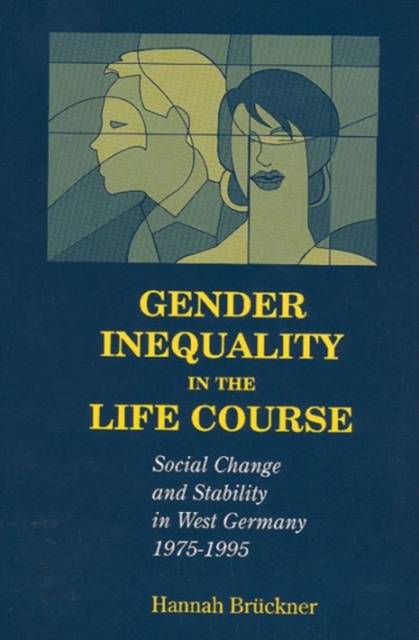
- Retrait gratuit dans votre magasin Club
- 7.000.000 titres dans notre catalogue
- Payer en toute sécurité
- Toujours un magasin près de chez vous
- Retrait gratuit dans votre magasin Club
- 7.000.0000 titres dans notre catalogue
- Payer en toute sécurité
- Toujours un magasin près de chez vous
Gender Inequality in the Life Course
Social Change and Stability in West Germany, 1975-1995
Hannah Brueckner
125,95 €
+ 251 points
Format
Description
How do women fare in a society that is characterized by a set of institutions that promote income stability over the life course and thereby maintain and even amplify status difference? Using recently issued public files of social security records with longitudinal earnings data of well over half a million persons, this book describes gender inequality in earnings and labor market participation in contemporary Germany between 1975 and 1995.Because of the advanced industrial base of Germany, its relevance to other nations at the high end of production and consumer indices becomes apparent. Brückner's work is a unique combination of empirical and theoretical work. She takes seriously the effect of marriage status on labor supply and wages: married men work more and earn more, while married women work less and earn less. But to this rather conventional measure she introduces a second important consideration: the life course, multiple social contexts that help explain the unfolding of social action and economic status. In this way the family becomes a critical factor in explaining such crucial sources of inequality as tax laws, property transference, and transfer payments--and how these are regulated by the welfare state. The results from a life course analysis are contrasted with cross-sectional trends and a traditional lifecycle model to show that much depends in part on the data and methods used to explore it. The work closes with a solid social scientific analysis of systems choices: the private market in contrast to the social democratic welfare state solution. While recognizing that the latter is a direct effort at resolving the gender gap in wages and welfare, Professor Brückner also appreciates that there are high costs to the overall economy, not the least being a taxation that erodes the earning power of families and individuals as a whole, and hence is less of a solution than the spreading of the problem.
Spécifications
Parties prenantes
- Auteur(s) :
- Editeur:
Contenu
- Nombre de pages :
- 158
- Langue:
- Anglais
- Collection :
Caractéristiques
- EAN:
- 9780202306919
- Date de parution :
- 31-05-04
- Format:
- Livre relié
- Format numérique:
- Genaaid
- Dimensions :
- 164 mm x 236 mm
- Poids :
- 390 g

Les avis
Nous publions uniquement les avis qui respectent les conditions requises. Consultez nos conditions pour les avis.






